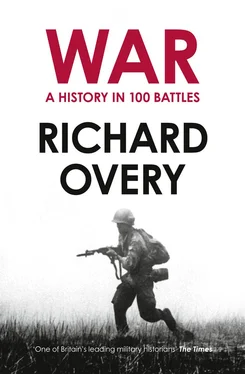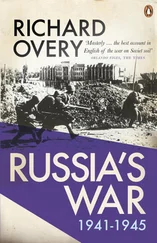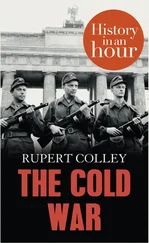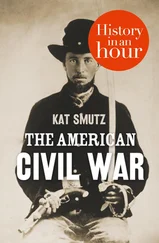It is obvious in any history of battles that leadership is not a universal quality among military leaders, and many of those on the losing side were poor planners, with little grasp of the battlefield, were overconfident or arrogant in their assessment of the enemy, or were simply lacking in the necessary courage and optimism their forces needed. Such leaders can be found in many of the battles selected here. On the other hand, it was possible to have two leaders of evident quality pitted against each other, where only one could win. The Battle of Hastings perhaps comes closest to that model. It would be difficult to fault Harold for what went wrong that day and no-one would consider it a historical anomaly had he won the field rather than William. This is a reminder that even leadership was seldom enough on its own, which is why innovation, deception, raw courage or good fortune were there to supplement it.
1. BATTLE OF GAUGAMELA
1 October 331BCE
In October 331 BCE, Alexander the Great destroyed in a single day the power of the largest empire in the Middle East, that of the Persian ruler Darius III. Success had followed Alexander since he took the throne of Macedonia in 336 BCE, but victory over Persia and its allies sealed his legendary reputation as a military genius at the tender age of twenty-five.
Alexander succeeded to the throne following the murder of his father, Philip. Within five years, he had confronted the Persian Empire and its wide network of satrapies (provinces) in Anatolia, the coastal communities along the eastern Mediterranean littoral and in Egypt. He seems to have been an instinctive battlefield commander, though aware of the lessons to be drawn from triumphs of the past and the strategic practices of his father. In 333 BCE, he inflicted a heavy defeat on the Persian emperor at the narrow coastal plain around Issus in northern Syria, but failed to capture him. Alexander had ambitions to become master not only of Western Asia and Greece, but of the entire area that the wealthy warrior empire of Persia had ruled for centuries. In 331 BCE, he set out from Egypt to track Darius down somewhere in present-day Iraq, determined it seems to inflict a decisive defeat on the Persians. According to classical historians, he went armed with news from the oracle at Siwah in Egypt’s Western Desert that he might be the son of Zeus, chief of the Greek gods. This certainly might explain the remarkable confidence that Alexander displayed in the final showdown against a Persian army at least four times larger than his own.
The Macedonian force was still large – 40,000 foot soldiers and 7,000 cavalry – and its movement across hundreds of miles of territory was an organizational feat in its own right. Alexander crossed from Egypt to Syria, where he lingered for some weeks, waiting to hear if Darius was preparing his own army for combat. When news reached him in mid-July of the Persian emperor’s whereabouts, Alexander led his army towards the River Euphrates, intent on his showdown. On the opposite side there were 3,000 of Darius’s cavalry under the command of Mazaeus, but they withdrew southwards, scorching the earth as they went. This was to force Alexander to take the longer northern route past the Armenian mountains then down into the valley of the Tigris, where Darius was already preparing his battlefield near the village of Gaugamela. Stakes and snares were set to halt a cavalry charge; the ground was flattened to enable the 200 Persian chariots armed with sharp scythes to run straight and fast at the ranks of the enemy. Ancient authors talked of one million men in the Persian army, but the number is likely to have been perhaps 200,000, of whom 30,000 were cavalry drawn from all over the empire. Fifteen Indian elephants were to guard the centre of the Persian line.
Alexander captured Persians sent to reconnoitre his force and learned exactly where Darius was. On 29 September, he ordered his army to march off in battle order for a possible night attack on the enemy; sensing their fear as they sighted the 100,000 camp fires of the enemy host, Alexander called a halt on the heights overlooking the ‘Camel’s Hump’, the hill from which Gaugamela took its name. He spent the day exhorting his troops and inspecting the prepared battleground. In the evening he made a sacrifice in honour of Fear, to propitiate the emotion. Then he worked out his battle plan in detail with his commanders, compensating for the strength of the enemy by unconventional means.
On the following morning, 1 October, Alexander woke late, well rested and confident of the outcome – a mood that was intended to inspire confidence in his men. His complex battle-line was drawn up: on the left, a large body of horse and shield-bearers under Parmenion; in the centre, 10,000 of the highly-trained Foot Companions in a phalanx armed with the formidable two-handed 6-metre (20-foot) sarissa spears, flanked by 3,000 shield-bearers (light infantry); and sloping to the right, creating an angled front, Alexander with his cavalry, fronted by archers and slingers. On each wing a ‘flap’ of cavalry was attached, among whom were concealed heavily-armed infantry, which could fall back to protect the rest from encirclement. Behind these were 20,000 reserve infantry, which could be moved forwards to create a large protected oblong.
Managing such a complex battlefield was difficult, as information could only be sent by messenger or trumpet, and thick dust was thrown up by the horses wheeling around on the sandy earth. Alexander’s strategy carried risks should any of the units misunderstand their orders or fail to hold fast. Darius had a simpler plan: to send forward his much larger bodies of cavalry, to decimate the Foot Companions with the scythed chariots, and to scare off the Greek cavalry with the elephants. Around mid-day, Alexander’s army moved onto the prepared battlefield in tight order. What happened next relies on accounts whose authors had a vested interest in painting Alexander’s achievements in glowing colours, but the main shape of the battle seems clear. Alexander moved his cavalry forwards but to the right to tempt the Persian left to follow him, thus exposing the centre and opening up a gap in the Persian line. On rougher ground, the Persian Scythian cavalry charged at Alexander, but were caught up among foot soldiers and archers. Darius released the chariots, but they were subjected to an accurate volley of arrows and sling-shots; those that reached the Macedonian lines were let through, then slaughtered by the soldiers behind. The rest of Alexander’s line was subject to heavy cavalry attack, and might well have collapsed, but Alexander, looking for the gap caused in the Persian centre, wheeled round and charged directly at Darius and his entourage, avoiding the elephants. The Macedonian Foot Companions with their fearsome sarissas and their cry of ‘alalalalai’ surged forwards and Darius, sensing his extreme danger, fled from the scene.
The flight of the emperor seems to have infected much of the rest of the Persian army, which melted away to the south and east. Large numbers of horsemen had succeeded in cutting past Parmenion and rampaged forward to seize Alexander’s baggage camp, where, to their surprise, they met the 20,000 reserves, who overwhelmed and destroyed them. Alexander rode off after Darius but his rearguard fought a ferocious defence and by the time the battlefield could be left behind and the hunt begun, Darius was already far away, fleeing to the mountains and the safety of the city of Ecbatana (Hamadan). The Persian emperor had overestimated the power of sheer numbers and fought a predictable battle; Alexander, by contrast, had made the most of his limited numbers, using them to unhinge the enemy at a crucial moment by careful exploitation of combined-arms tactics. Victory at Gaugamela brought him a reputation in the classical world to match the mythic stories of Achilles or of Hercules. Alexander moved on to Babylon and then the Persian capital at Susa. In so doing, he became, it has been estimated, the richest man in the known world.
Читать дальше












